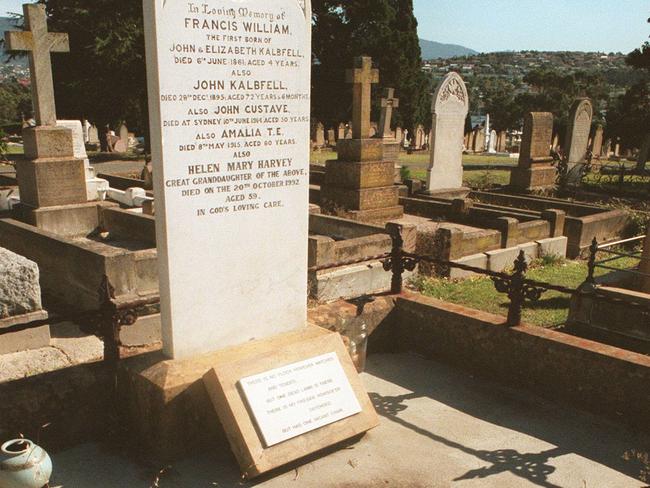How an eccentric heiress and Australia’s most notorious mass killer forged an unlikely friendship
AN eccentric heiress, a house full of animals and Australia’s most notorious mass murderer. Before he became a killer, Martin Bryant inherited a fortune.
THE warning signs were clear.
A psychiatrist’s report of Martin Bryant, the perpetrator of the Port Arthur Massacre, darkly noted that upon leaving high school he “[couldn’t] read or write. Does a bit of gardening and watches TV ... Only his parents’ efforts prevent further deterioration. Could be schizophrenic and parents face a bleak future with him.”
The observation was horrifically accurate.
He could not read social cues, would cut down neighbours’ trees, tortured small animals, was disruptive throughout his schooling, and had an estimated I.Q. of 64, which is lower than that of 90 per cent of eleven-year-olds. He was placed on a disability pension, and never expected to work in any conventional sense.
But there’s an element of Bryant’s life that is often overlooked: the deep-seated bond he shared with a reclusive middle-aged woman when he was just a teenager.
When Martin Bryant was 19, he launched a lawn mowing service in New Town, a suburb of Hobart. While canvassing the neighbourhood for new customers, he met a 54-year-old woman with an unkempt yard and money to burn. This would be the only lasting relationship Bryant would ever form.
Helen Mary Elizabeth Harvey was an heiress to the Tattersall gambling fortune who quit her job with the Tasmanian Railways before turning 30, spending the following decades with her mother in a sprawling mansion as they both mourned the passing of Helen’s father.
Helen and her mother Hilza were long-term recluses by the time they met Bryant, who randomly knocked at the door of the mansion one day after noting the neglected state of the house and yard. Helen Harvey agreed to provide Bryant with yard work, and the pair quickly became inseparable.

The relationship is detailed in Robert Wainwright and Paola Totaro’s book B orn or Bred? Martin Bryant: The Making of a Mass Murderer.
Forensic psychiatrist Professor Paul Mullen asked Bryant about the pair’s curious relationship. “He describes Miss Harvey as having been his only real friend,” Mullen notes in the book. “He said from the outset they got on well together. It was not a sexual relationship.”
By the time she met Bryant, Helen Harvey’s mental state had deteriorated over years of isolation: She kept roughly 40 cats scratching inside a large garage, with 14 dogs enjoying the run of the house.
Hilza was sleeping downstairs in the kitchen among piles of filth; she had a broken hip which went undiagnosed for two years, while they both had infected leg ulcers. Bryant helped around the house to the extent he was able, but seemed more interested in fostering his close bond to Helen.
An anonymous person reported Helen and Hilza to the health authorities in June 1990, and Hilza was placed in permanent care — dying by the end of July from numerous underlying issues.
After authorities swooped, a clean-up order was placed on the mansion. Martin Bryant dutifully spent three months getting the place up to code with the aid of his long-suffering father Maurice, who took long-service leave to help his son.
The entire house was cleaned, most of Helen’s belongings were tossed away, and by the time she was home, and Hilza had passed, she was enjoying the company of her new housemate, Martin, and spending her millions more freely.
Bryant seemed to have been good for Helen, forcing her out of the house most days on numerous shopping trips, where the pair would blow Helen’s inheritance on needless expenses — she bought 50 different cars overs the years, and would treat herself and Bryant to lavish afternoon lunches most days.
Despite the money, Bryant stayed on his disability pension, and as such was required to undergo regular assessments; one such assessment was seemingly ignored at the time, despite the strong wording.
“Father protects him from any occasion which might upset him as he continually threatens violence. Martin tells me he would like to go around shooting people. It would be unsafe to allow Martin out of his parents’ control.”
Nevertheless, Bryant and Harvey soon outgrew their mansion lifestyle, reportedly due to the RSPCA’s insistence they not keep pets in the house anymore.
They moved to a dilapidated farm property in Copping, about 40km outside of Port Arthur, and stocked up on pets. Helen Harvey kept the mansion in Hobart, the dozens of cars, and by the end of 1991 had filed a will, leaving everything to “my friend Martin Bryant for his own absolute use and benefit.”
Farm life seemed to be making Bryant’s behaviour more erratic — without the immediate influence of his parents, he retreated further into his own fantasy world, carrying an air rifle around at all time, shooting at tourists who stopped at a produce stall at a nearby highway, and patrolling the property in the dead of the night, firing his rifle into the dark.
Harvey often matched his eccentricities, leaving her car parked around town with miniature ponies, dogs, and cats sharing space in the crammed back seat while she wandered around the township on shopping sprees.
Her love of cars would prove a major stumbling block in their relationship, with Bryant — despite expressing a fear of getting his licence — often grabbing the steering wheel from her to take over mid trip. This impulsive behaviour had resulted in two prior crashes, and with his diminished intelligence, it is unclear whether he knew the weight of what he was doing.
On October 20, 1992, Helen Harvey’s unlikely friendship with Martin Bryant finally proved fatal.
The pair were driving home after a day of shopping with their three dogs in the back of the car when they swerved across double yellow lines towards a Ford Sedan. There is speculation that Bryant had again grabbed control of the wheel.
Harvey’s neck was broken in the impact — she died instantly, along with two of their dogs. There was no investigation into her death no one was ever charged.
Martin Bryant was devastated — and was now a multi-millionaire, inheriting her house, fortune and a place in her grave.




